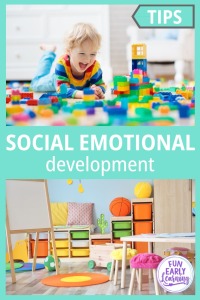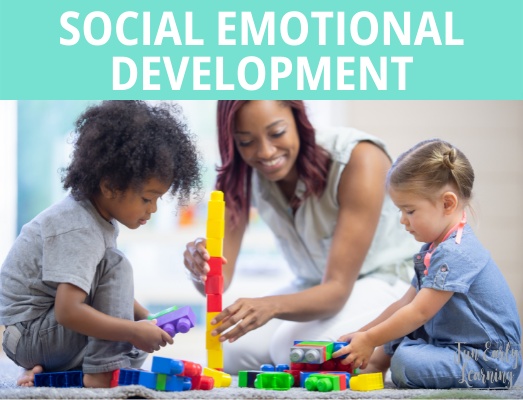
Social and emotional development is important for children. It focuses on them as a whole. It helps them to manage their emotions, relationships, decision making, setting and achieving goals. Most importantly, when children’s social and emotional needs are met, they do better in school and show more academic growth. High-quality interactions play a huge role in this. Social Emotional Development Early Childhood is crucial.

What is Social Emotional Learning
Social-emotional learning is described as a child’s ability to understand and control their emotions. This includes building relationships with children and adults. and friends and family. It includes showing empathy, having a sense of self, and critical thinking.
The Importance of Social Emotional Learning
High-quality interactions play a HUGE role in children building their social and emotional development. How you interact with and support children now impacts their future. As adults, we’re expected to control our emotions, and our stress. We’re supposed to know how to work with others. We don’t just automatically have those skills. We need to learn them. Consequently, it all starts with children.
How to Support Emotional Development Early Childhood
1. High Emotional Support
Studies have shown that classrooms with high emotional support, have children with increased social skills and lower behavioral problems. In these classrooms, children have a strong bond with the teacher. They feel safe and secure in the environment. Children are open to new experiences. They are encouraged and listened to. The teacher is warm and welcoming, uses a calm voice, and responds to children’s emotional needs. With all of these amazing things happening, it makes sense that children feel supported and have fewer behavioral problems.
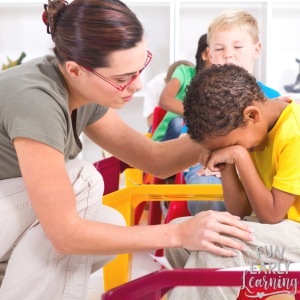
2. High Instructional Support
Children need lots of stimulation during the day. When they are young, their brain is developing at a rapid pace. They are naturally curious and ready to learn. Its important to provide instructional support to further their thinking. They need things to analyze and predict. Ask open-ended questions throughout the day and use new vocabulary words. You can tie the questions into studies you’re doing throughout the day, like this Five Senses Study. Or spontaneously ask questions as they play. For example, “how will we make this tower of blocks not fall down?” “Oh no, it fell down, why do you think that happened?” “What kind of foundation should we use for our next tower?” These examples ask open-ended questions and introduce vocabulary words like foundation.
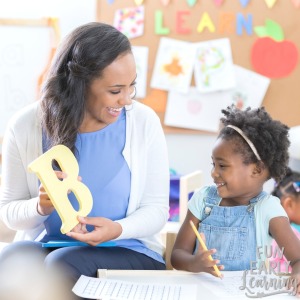
3. Outstanding Classroom Organization
Chaos is not conducive to learning. The more organized your classroom is and your lessons, the better it is for children. It’s important to have a set plan in place with materials ready to go. Children shouldn’t be waiting around for the next book to be grabbed and read. Or waiting for the next center to be prepared. Prepare it ahead of time and flow from one activity to the next. This will save your sanity and build strong social emotional development in your students.
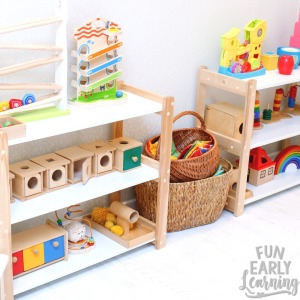
4. High-Quality Interactions
Having a strong teacher-child relationship is extremely important to children’s social emotional development. High-quality interactions is the foundation. For example, have meaningful conversations with your students where you are on their level making eye contact. Match their behavior. Smile an laugh.
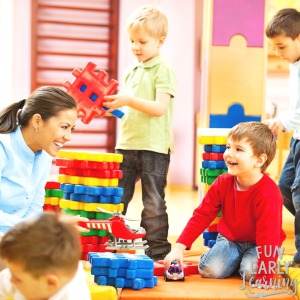
5. Set Clear Expectations
Children don’t know classroom expectations on day 1. We need to teach them in clear and appropriate ways. Knowing expectations helps social emotional development. You can do this by providing a poster with expectations at each center. Having a chart where it shows positive behaviors and stopping behaviors. Discussing expectations at circle time is a great way to engage children in the conversation and get them on board. Having positive, clear expectations reduces behaviors problems.
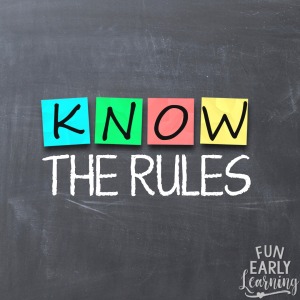
These are just a few of the ways to support social emotional development in early childhood. As long as you’re doing the 5 tips above, you are well on your way to helping your students grow and thrive. What other things do you do to build social and emotional development? I’d love for you to share your ideas in the comments below.
